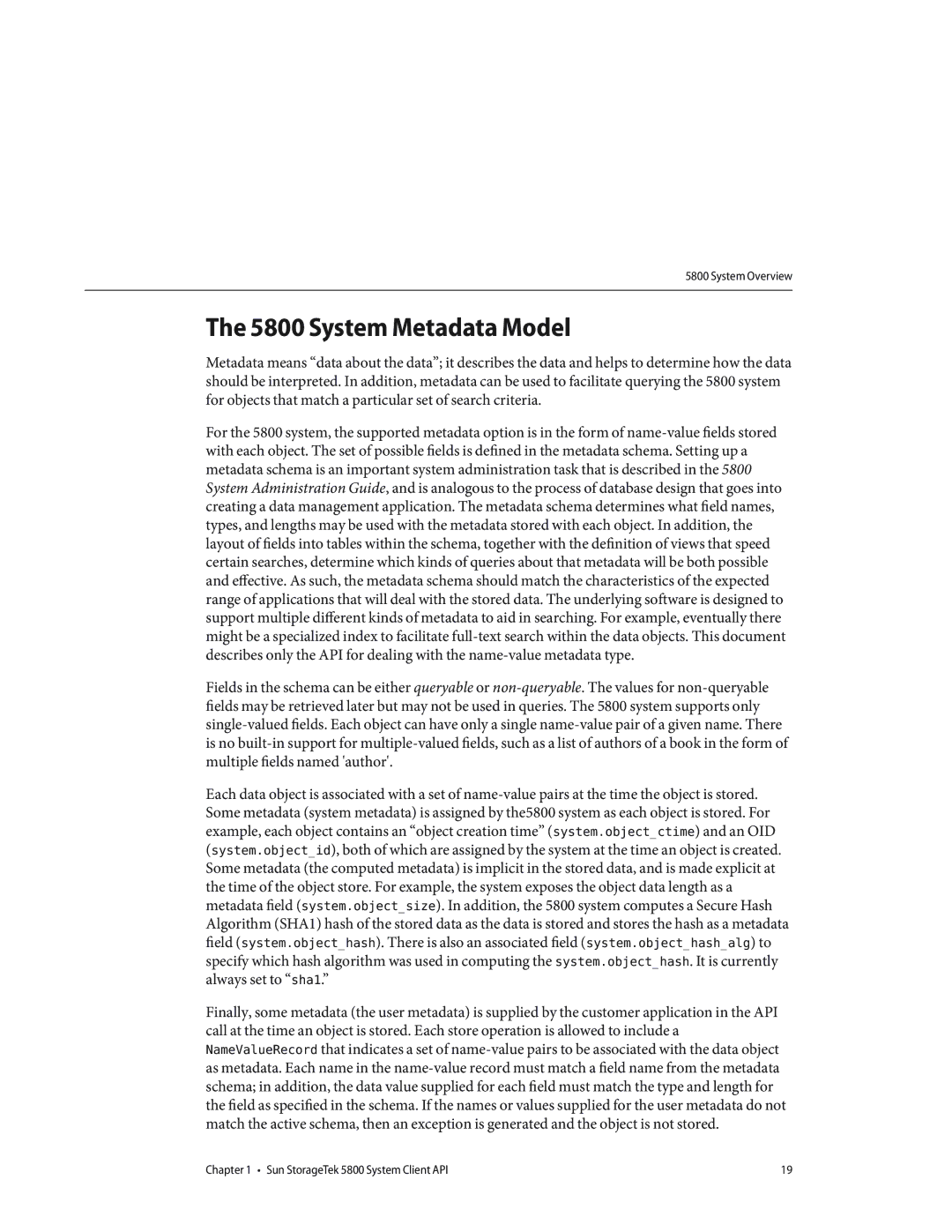5800 System Overview
The 5800 System Metadata Model
Metadata means “data about the data”; it describes the data and helps to determine how the data should be interpreted. In addition, metadata can be used to facilitate querying the 5800 system for objects that match a particular set of search criteria.
For the 5800 system, the supported metadata option is in the form of name-value fields stored with each object. The set of possible fields is defined in the metadata schema. Setting up a metadata schema is an important system administration task that is described in the 5800 System Administration Guide, and is analogous to the process of database design that goes into creating a data management application. The metadata schema determines what field names, types, and lengths may be used with the metadata stored with each object. In addition, the layout of fields into tables within the schema, together with the definition of views that speed certain searches, determine which kinds of queries about that metadata will be both possible and effective. As such, the metadata schema should match the characteristics of the expected range of applications that will deal with the stored data. The underlying software is designed to support multiple different kinds of metadata to aid in searching. For example, eventually there might be a specialized index to facilitate full-text search within the data objects. This document describes only the API for dealing with the name-value metadata type.
Fields in the schema can be either queryable or non-queryable. The values for non-queryable fields may be retrieved later but may not be used in queries. The 5800 system supports only single-valued fields. Each object can have only a single name-value pair of a given name. There is no built-in support for multiple-valued fields, such as a list of authors of a book in the form of multiple fields named 'author'.
Each data object is associated with a set of name-value pairs at the time the object is stored. Some metadata (system metadata) is assigned by the5800 system as each object is stored. For example, each object contains an “object creation time” (system.object_ctime) and an OID (system.object_id), both of which are assigned by the system at the time an object is created. Some metadata (the computed metadata) is implicit in the stored data, and is made explicit at the time of the object store. For example, the system exposes the object data length as a metadata field (system.object_size). In addition, the 5800 system computes a Secure Hash Algorithm (SHA1) hash of the stored data as the data is stored and stores the hash as a metadata field (system.object_hash). There is also an associated field (system.object_hash_alg) to specify which hash algorithm was used in computing the system.object_hash. It is currently always set to “sha1.”
Finally, some metadata (the user metadata) is supplied by the customer application in the API call at the time an object is stored. Each store operation is allowed to include a NameValueRecord that indicates a set of name-value pairs to be associated with the data object as metadata. Each name in the name-value record must match a field name from the metadata schema; in addition, the data value supplied for each field must match the type and length for the field as specified in the schema. If the names or values supplied for the user metadata do not match the active schema, then an exception is generated and the object is not stored.
